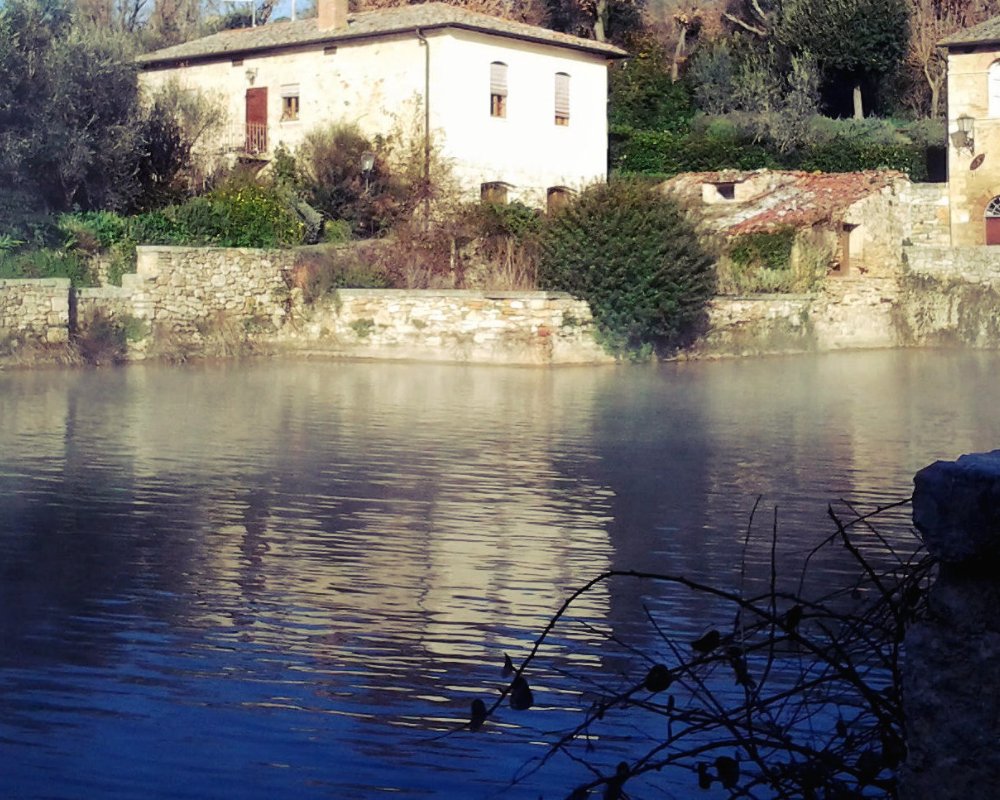Bagno Vignoni to San Casciano dei Bagni
The itinerary starts in the area of the thermal springs of Bagno Vignoni, where you can enjoy spa treatments at the three accommodation facilities there: Le Terme Spa & Resort, the Hotel Posta Marcucci, and the Terme Hotel Adler. On departing from Bagno Vignoni the route continues along the Cassia (SS2). Turning right in the direction of Abbadia San Salvatore on the SP61 the route then follows the SP18 towards the summit of Monte Amiata.
The itinerary starts in the area of the thermal springs of Bagno Vignoni, where you can enjoy spa treatments at the three accommodation facilities there: Le Terme Spa & Resort, the Hotel Posta Marcucci, and the Terme Hotel Adler. On departing from Bagno Vignoni the route continues along the Cassia (SS2). Turning right in the direction of Abbadia San Salvatore on the SP61 the route then follows the SP18 towards the summit of Monte Amiata.
After 26 Km you arrive at Abbadia San Salvatore, the principal settlement of Monte Amiata. This small town has a history of mining where, until the 1970s, they extracted mercury. Today, the mines have been transformed into important museums where it is possible for visitors to descend into the underground tunnels and even travel in the carriages of the small mining trains (accompanied by expert miners). The real hidden gem of Abbadia however is the 7th Century Abbey, with its magnificent crypt. Monte Amiata, rising 1,738 metres above sea level, is Italy’s highest inactive volcano and a targeted destination for winter sport enthusiasts and nature trail lovers.
After 26 Km you arrive at Abbadia San Salvatore, the principal settlement of Monte Amiata. This small town has a history of mining where, until the 1970s, they extracted mercury. Today, the mines have been transformed into important museums where it is possible for visitors to descend into the underground tunnels and even travel in the carriages of the small mining trains (accompanied by expert miners). The real hidden gem of Abbadia however is the 7th Century Abbey, with its magnificent crypt. Monte Amiata, rising 1,738 metres above sea level, is Italy’s highest inactive volcano and a targeted destination for winter sport enthusiasts and nature trail lovers.
On leaving Abbadia San Salvatore the route follows along the SP61 and then onto the Cassia (SS2), eventually turning left onto the SP321 towards San Casciano dei Bagni. The road leads past the small village of Celle sul Rigo, through an almost lunar landscape characterized by ravines (‘calanchi’) caused by the deep cracks in the clay soil. To the left, perched in the rock on top of one of the hills, you will be able to glimpse the town of Radicofani, with its medieval fortress, once the refuge of Ghino Tacco, the bandit of the Val d’Orcia.
On leaving Abbadia San Salvatore the route follows along the SP61 and then onto the Cassia (SS2), eventually turning left onto the SP321 towards San Casciano dei Bagni. The road leads past the small village of Celle sul Rigo, through an almost lunar landscape characterized by ravines (‘calanchi’) caused by the deep cracks in the clay soil. To the left, perched in the rock on top of one of the hills, you will be able to glimpse the town of Radicofani, with its medieval fortress, once the refuge of Ghino Tacco, the bandit of the Val d’Orcia.
After 30km the route arrives at San Casciano dei Bagni. Here, as is the case with Bagno Vignoni, records tell us that the warm thermal water of this area has been renowned since Etruscan times. It wasn’t until 1600 however, when the Grand Duke Ferdinando I built the elegant arcades of what is today the Fonteverde spa resort, that the trend of natural spa resort holidays started in earnest. The old town of San Casciano is, in actual fact, a complete reconstruction and the castle is an example of the popular reconstructions of the era spanning the 19th and 20th centuries.
After 30km the route arrives at San Casciano dei Bagni. Here, as is the case with Bagno Vignoni, records tell us that the warm thermal water of this area has been renowned since Etruscan times. It wasn’t until 1600 however, when the Grand Duke Ferdinando I built the elegant arcades of what is today the Fonteverde spa resort, that the trend of natural spa resort holidays started in earnest. The old town of San Casciano is, in actual fact, a complete reconstruction and the castle is an example of the popular reconstructions of the era spanning the 19th and 20th centuries.


